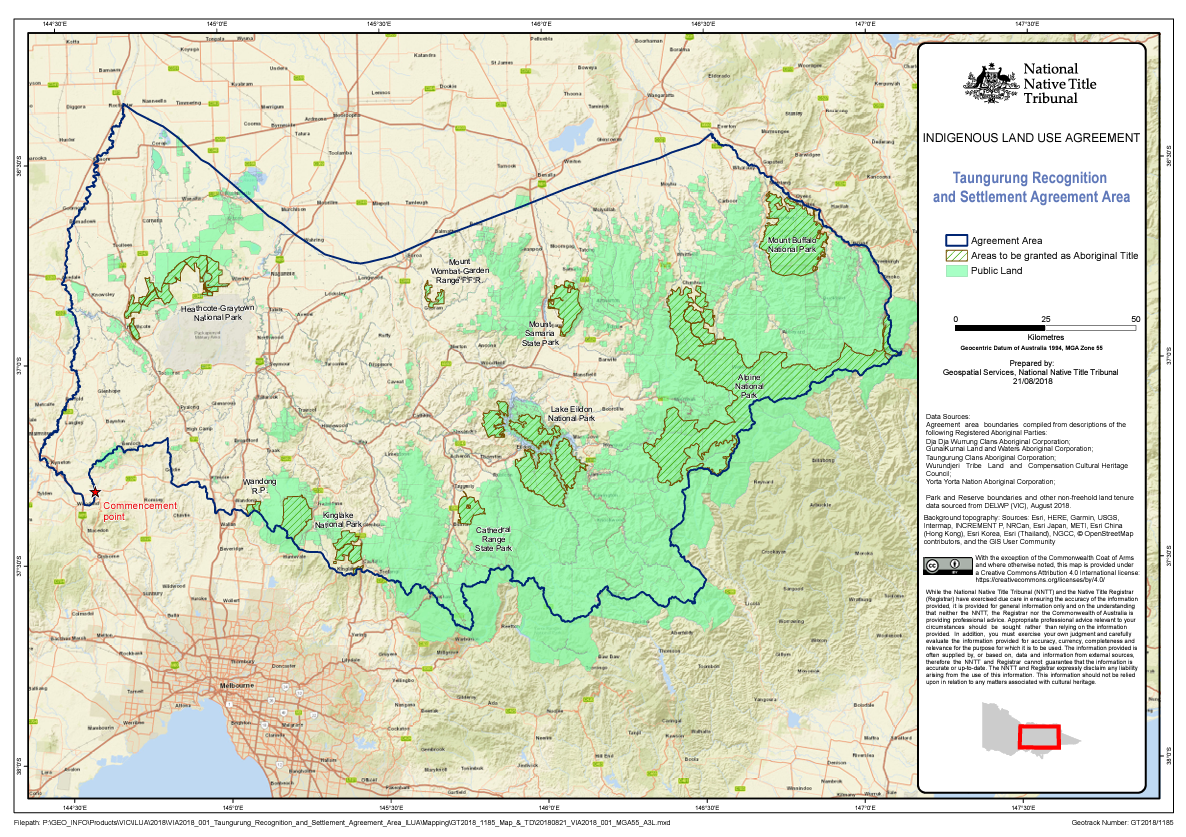The first major question to ask, before considering what type of activity is proposed, is whether the Taungurung Land Use Activity Agreement (LUAA) applies to the relevant land.
'Public land'
The LUAA applies only to ‘public land’ (often called Crown land). This means:
- Unreserved Crown land
- Reserved Crown land
- Reserved forests, national parks, nature reserves and state wildlife reserves.
The LUAA does not apply to:
- freehold land
- land vested in VicTrack (by legislation)
- land vested in a local council under s 16 of the Crown Land (Reserves) Act 1978.
Regardless of any use by the public, these freehold areas are not ‘public land’ as defined above. The Aboriginal Heritage Act 2006 still protects sites on that land, but the Taungurung Land and Waters Council (TLaWC) does not have procedural rights under the LUAA.
Unlike native title, the LUAA does not concern itself with the legal history of the land. No tenure history searches are needed. This is one of the benefits of the LUAA, compared with the equivalent Native Title processes.
In effect, the LUAA asks only: at the date of the proposed activity, is the land ‘public land’?
The LUAA area
The LUAA applies to all public land (subject to certain exclusions) within the boundaries now recognised as Taungurung country, as shown on this overview map.
For further detail about the boundary, you can:
- refer to the detailed description, containing specific boundary parcels and location co-ordinates, in Schedule 2 of the LUAA itself(opens in a new window)
- obtain the GIS data to show the LUAA boundary as a layer in your mapping system.
Exclusions from the LUAA
Leases within Alpine Resorts
The LUAA does not apply to leases of land within the boundaries of an Alpine Resort, or to activities carried out under those leases.
Existing Infrastructure
The LUAA does not apply to land covered by certain kinds of existing infrastructure (see below).
Where that infrastructure has been demolished in order to replace or refurbish it, for the same purpose, the land continues to be excluded.
However, where former infrastructure has been removed so as to permit safe public access to the former footprint of the infrastructure, that land is no longer excluded.
This makes practical sense: that land is once again ‘public land’, without any infrastructure, and so it is subject to the LUAA.
Click on the following headings to show additional information. If you are uncertain whether particular land is excluded from the LUAA, you are encouraged to discuss it with TLaWC(opens in a new window).
Church land
The LUAA does not apply to land that is subject to the State Aid to Religion Abolition Act 1871.
This refers to Crown land that had been granted, promised or reserved for church use by 1871. In that year, a process was established by which such land could be granted to those churches as freehold, by application to the Minister.
Land that has been acquired by churches since that time will likely be freehold land, also excluded the LUAA.
Specific parcel exclusions
The LUAA lists parcels of land that are specifically excluded from the LUAA. These were planned for future use or sale at the signing of the Recognition and Settlement Agreement (2018).
Few of these will still be public land as time goes on, but it may be important to check this list for potential exclusions.
Next steps
If you have assessed that the land in question is subject to the LUAA, continue reading What kind of activity is it?
If not, and you are a decision maker for the relevant land, you should make records of your assessment that the LUAA does not apply to that land. You may wish to use the template below, or other record-keeping systems appropriate to your organisation. You need not read any further pages in this section.
Updated


